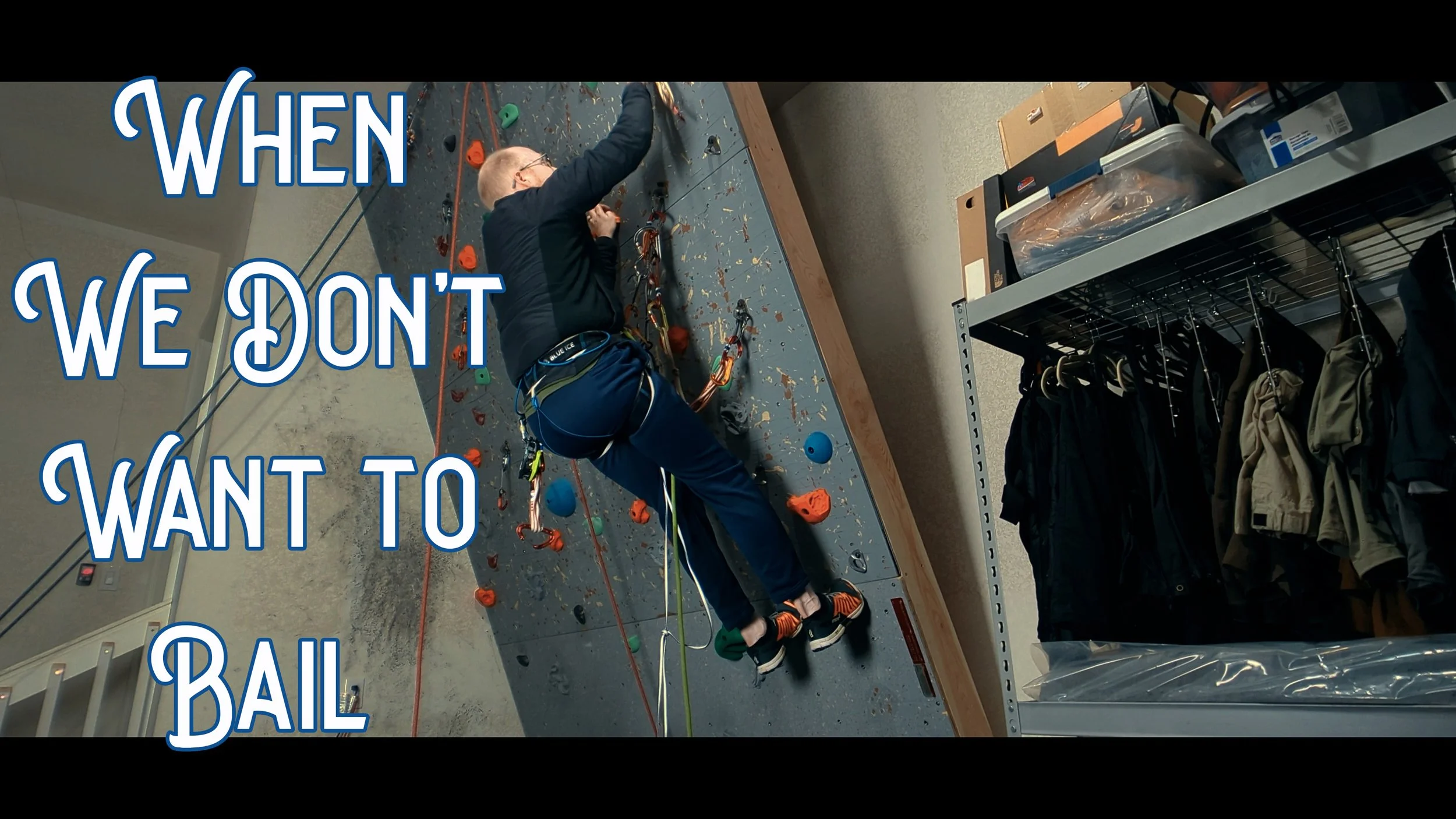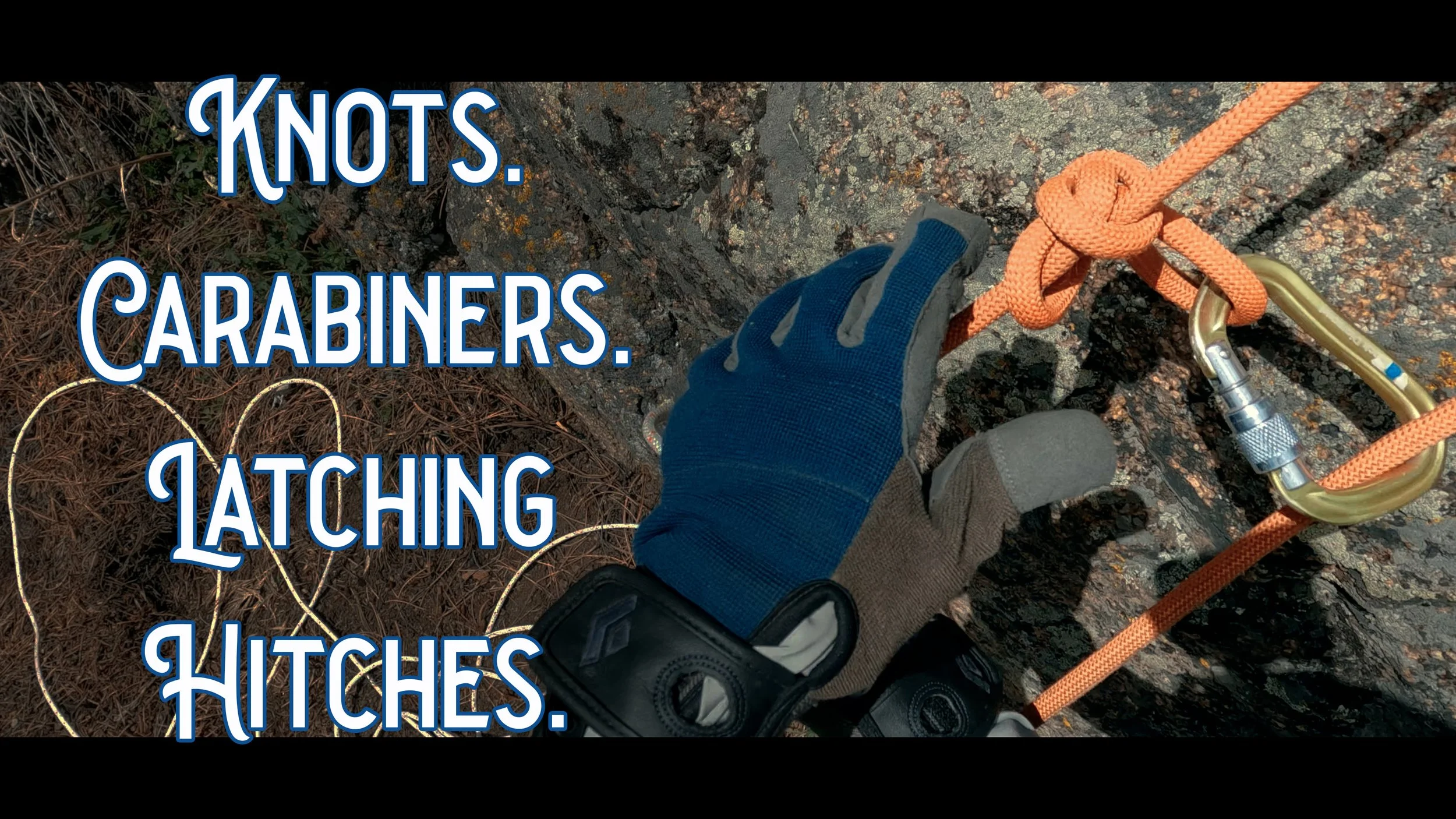All blogs
Every full length (longer than 60 seconds) video and accompanying blog post
How and Why Climbers Use Tandem Rappels
I was asked if a tandem rappel could be done instead of a counterbalanced rappel because a tandem rappel is safer. In some circumstances, particularly in rescues, tandem rappels are used. But, while generally safer than a counterbalanced rappel, there are still too many safety and efficiency downsides for it to be a standard rappelling technique outside of emergency situations.
High-altitude First Ascensionist Taught Me this Improvised Aid Climbing Technique
When we get into uncertain alpine terrain, things can change quickly. Terrain features can change, snow and ice coverage can change, and weather is more dynamic. Any of these changes could confront us with a pitch that might be too hard to climb given our current footwear and carried equipment. Rather than turn around, this improvised gear and movement sequence may help us continue on our climb.
Which Rope Block Systems are SAFER for Single Strand Rappels?
Like most things in climbing, what is "safer" depends on circumstance. In this case, we are looking at rope blocking options: knot blocks, carabiner blocks, and the Reepschnür hitch (and some of the modifications to it) in order to explore the security at the rappel (abseil) anchor point versus ease of retrieving our rope.
Can You Make the Perfect Crevasse Rescue Anchor?
The short answer is, "no, you cannot make the perfect crevasse rescue anchor." The inherent tradeoffs between speed and anchor strength and adaptability mean that we have a series of risk-mitigating decisions we need to make before we ever start hauling our climbing partner out of the crevasse. Let's take a look at those tradeoffs so that we can make the best choices we can should we ever really need to make them.
3 Easy Ways to Change Lead While Climbing a Glacier
When we want to change lead climbers on a glacier, we have to do so in a way that still protects the team from crevasse falls. Here are three methods for getting a trailing climber into the lead position.
SAVED by a 6-to-1 Crevasse Rescue Haul on a Three Person Team
A 6-to-1 crevasse rescue system, or a "z-haul" on the back of a "drop loop," is a flexible system that can mitigate many of the problems that arrive in various crevasse rescue scenarios. In this video, we demonstrate setting up and using the base system given a team of three climbers.
Surviving A Crevasse Fall Requires Knowing What To Do NEXT
We have fallen into a crevasse that is overhanging. We are free hanging, unable to touch the wall. We are tight against our knot, so have little rope slack to work with. What do we do first, to stabilize our situation, and then how do we ascend the rope to self-extract?
Zig Zag Method of EMERGENCY Rappel Down a Weighted Climbing Rope
If we have a climbing partner injured on rappel (abseil) who is weighting the rope, how can we get quickly down to them to render aid? Here is a method that has evolved over time.
Mastering The Figure Eight Retrace Knot, Perfect EVERY Time
New climbers, and even some experienced climbers, can improve both efficiency and safety by learning how to tie a high-quality figure eight retrace knot regardless of changing rope diameters. Here's a step-by-step process to get a knot that meets all the best-practice criteria, a breakdown of those criteria so we understand why they are important, and a walkthrough of a final knot check we should perform every time we tie in.
When Might a Rappel Be a BAD Idea?
When I am out climbing, there are times when I might choose to lower a first climber down a pitch rather than have the climber rappel. Here are five circumstances that I have faced, personally, and have at least sometimes decided to lower that first climber.
Are These Two Words Holding BACK Your Climbing?
Context is key. The systems we choose to employ on our climbs will be more or less effective depending upon the specific circumstances we face. So, I am hesitant to use the words "always" and "never" when it comes to climbing techniques. For example, here are four exceptions to the notion that we always belay a leader from the harness and a follower from the anchor.
Is the La Sportiva G-Summit the Most VERSATILE Climbing Boot?
The La Sportiva G Summit Boots are designed to be worn as either a single boot or a double boot with a removable liner. So, is it one boot that can serve all your needs? Warm enough for cold, high-altitude climbing? Light and maneuverable enough for technical climbing? How's the durability? What about the fit? Lets find out.
Three Uses of the Bowline on a Bight Knot for Climbing in the COLD
When winter sets in, the cold, the gloves, and the snow and ice all make tying and - particularly - untying weighted climbing knots more difficult. So, easier-to-knots to untie can make transitions in and out of systems faster. Here's three ways that I start using a bowline on a bight when wet, winter weather shows up in the mountains.
Have We Been Rappelling WRONG!? A No Tether Multi-Pitch Rappel
While the "backside clove hitch" method of connecting to the anchor is getting more and more popular for ascending routes, we can extend that same thinking to a multi-pitch rappel. The method was developed to address the problem with managing knots in the ends of our rope, as we need to remove them to pull the rope but need to add back for the next rappel, which creates opportunities for mistakes. Here's how it works.
Contrasting Two Transitions from Climbing to Rappelling to Study Tradeoffs
Like the old "choose your own adventure" books, each climb we make presents many choices, big and small. Let's look at two different transitions, moving from climbing to rappelling in a team of two, to see how our choices impact the various risks we can both avoid and bring into play by those choices.
Why Our Climbing Family Doesn't Typically Counterbalance Rappel (Abseil)
Counterbalanced simul-rappelling is something expert climbers will do in unusual circumstances, and this gives the impression of relative safety. But in nominal climbing circumstances, what benefit are we really gaining? We break down the time-savings benefits so that we can weigh the costs.
Climbing is Adapting: Case Study of a Recent Climb When Things Did Not Go Perfectly
On a recent climbing trip, I forgot my harness, used up gear making an improvised harness, and was confronted with a cascading series of risk assessments and mitigations as a result. Here is a case study of a climbing day when things went fine but imperfectly, as many days climbing end up being.
Taking an Improvised Climbing Harness Up and Down Multiple Pitches: What I Made and Why
On a fairly recent climbing trip, I forgot my harness. That left me needing to improvise a harness or make the long trip back without getting on the rock. Here’s how I used a quad runner, a double runner, and three carabiners to make a harness that was redundant throughout and comfortable enough to go up and down a multi-pitch climb without noticeable discomfort.
Our Brake-Assisting Belay Device Can Fail! Three Plaquette Risks and Mitigations
Every piece of climbing equipment has its strengths and weaknesses. The tube-style plaquette devices I use a lot, because I am often climbing with both of my boys, are no exception. Here are three ways these devices can fail to break assist when in the wrong circumstances along with what we can do to mitigate those risks.
Beyond Visual Checks: How Climbers Can Use Weight Transfers to Check Safety Systems
We make sure our new climbing system (belay, rappel, anchor, etc.) can take your weight before we start taking apart your previous system as we move through a climbing transition. Kind of common sense, huh? Not very enlightening. But what if we take that same concept and apply it in less obvious ways. Can keeping a mental model of "weight the new system, first" keep us safer more generally?




















